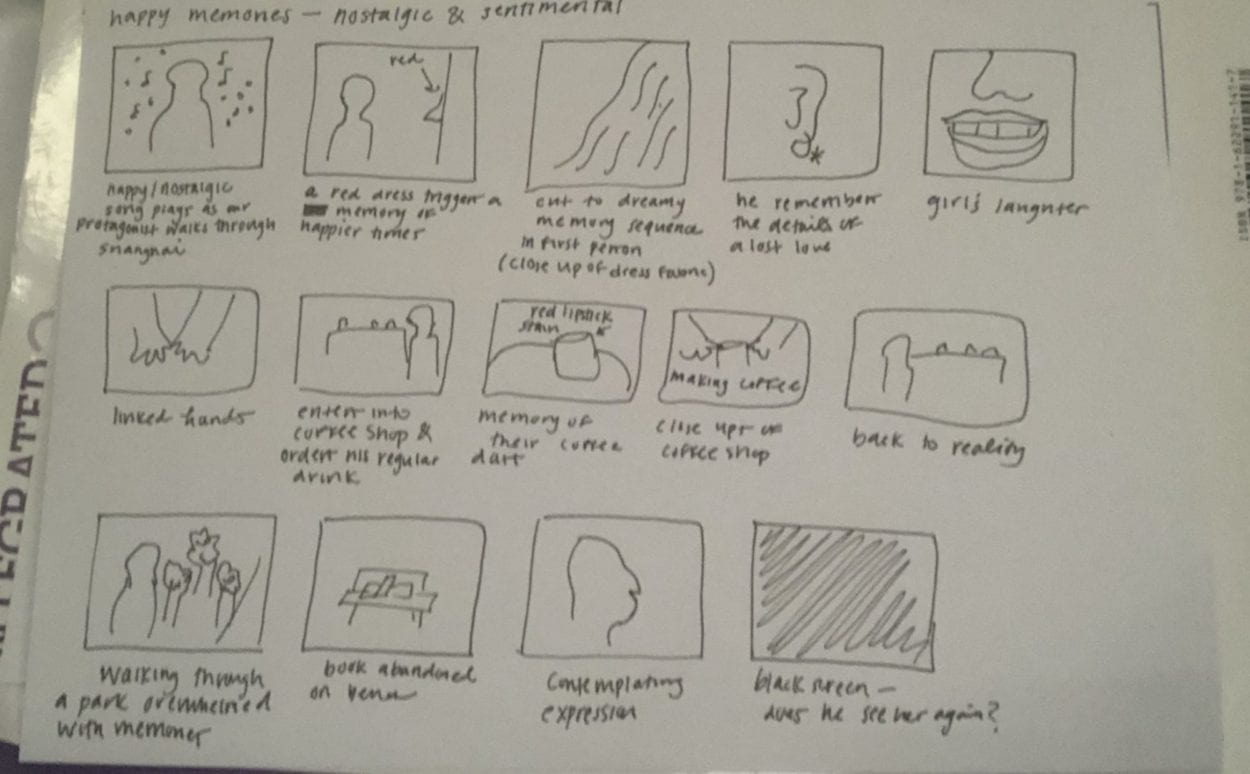http://imanas.shanghai.nyu.edu/~vra230/Video-Project/project.html
Video Project Proposal – Val, Jannie, & Thomas
For our video project, we are planning to tell an interactive story through video clips that explores multiple endings. Although we haven’t decided on a definite concept yet, Jannie suggested that we tell a detective story that investigates a murder mystery. It would be the user’s task to identify the clues hidden in the videos and figure out who had committed the crime based on the evidence in the videos. We could possibly make this project interactive by giving the user control over the story, allowing them to choose their own path based on their assumptions.
Storyboard:
(sorry for the bad quality, i have a broken camera)
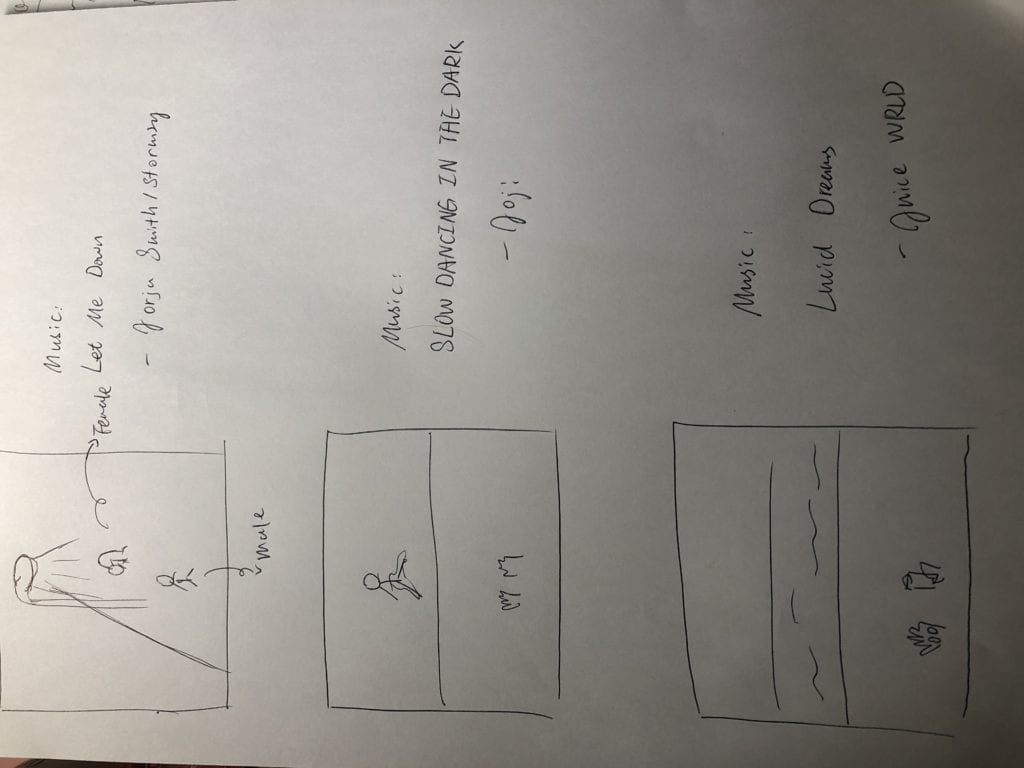
Week 7: The Danger of a Single Story Response – Val Abbene
In this TED talk, Chimamanda Ngozi Adichie speaks about the importance of viewing people and places from multiple perspectives instead of taking a single story as objective truth. Mass media is often guilty of broadcasting one-sided narratives and reducing groups to stereotypes that deny members of that group individuality. As Adichie explains, this not only harms the global perception of a group, but also the perception that members of that group have of themselves. Without diverse representation in media, children grow up believing that they don’t belong in literature or media because these are spaces dominated by Western representations and ideas. This reminded me of Edward Said’s book, “On Orientalism,” which discusses the problematic practice of the West otherizing and exoticizing Eastern cultures. As Adichie said, there is a “tradition of telling African stories in the West: A tradition of Sub-Saharan Africa as a place of negatives, of difference, of darkness.” This stems from centuries of orientalism that dehumanizes “the other” as negatives that only exist when in comparison to Western culture and ideals. This flattening of human stories is a harmful practice of thinking that reduces individuals to a group identity and doesn’t stop to consider the many exceptions to that narrative. Adichie’s talk is a reminder for everyone that it is necessary and responsible to portray people and events through multiple dimensions because stories are never one size fits all.
Audio Project Documentation – Val Abbene
Link: http://imanas.shanghai.nyu.edu/~yz4970/week7/audio-project/audio.html
For our audio project, Jannie and I decided to create a minimalistic online gallery of personal items gathered from NYU Shanghai students and staff. We split the workload in half and both equally contributed to the audio, visuals, and code.
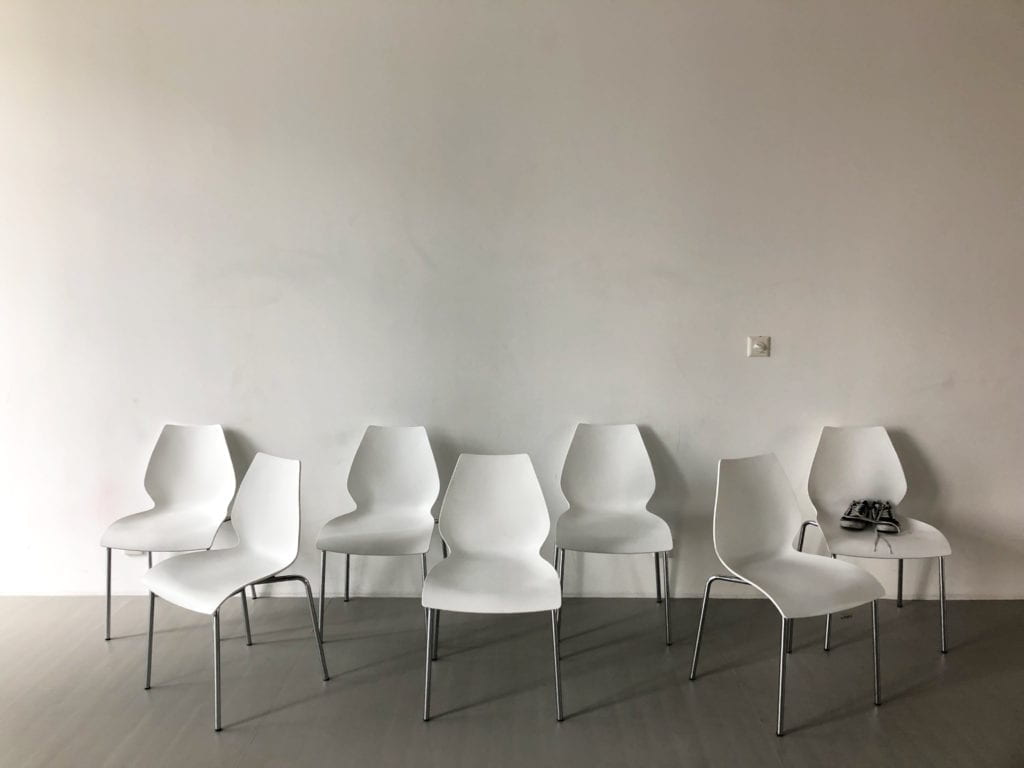
We wanted to express the importance and characteristics of these personal items through sound. We didn’t want to visually reveal these items on our display page, so we chose to only display the shadows of these objects until the user interacts with them. We made this choice to emphasize that the user should focus on the audio over the visuals of our website. Jannie had the idea to interview people about items that they couldn’t live without, so our project mainly focuses on individual storytelling. We expanded on this idea by asking our interviewees to speak in their native language, so that their story would become more personal. We wanted to have a diverse language profile in our project, so we recorded interviews in English, Chinese, Japanese, and German. For the languages that we did not speak ourselves, we asked our interviewees to provide a transcript that we could transfer into our subtitles.
The audio for our project was obtained in quiet environments using the Tascam and shotgun microphone to record. Some of the interviews were recorded on the 8th floor inside soundproofed rooms, but we weren’t able to use those rooms for all of the interviews because of their limited availability. We recorded the sound of the object first, as we wanted to these sounds to paint a auditory portrait of the object before the interview provided an explanation. Afterwards, we conducted short interviews in the native languages of our friends to add backstories to otherwise common objects. We wanted to emphasize that although the objects themselves are ordinary, their personal significance is what enhances their identity. Audacity was used to edit the audios and clean them up for our final project. When I was editing my part of the audio, I tried to create the effect that the sounds of the object was fading in and out of the interview by layering the audios. I thought that this would unite the object and persona and express that the two are needed together to create meaning. There was slight background noise in some of the audios that I recorded, so I tried to remove as much of it as I could without damaging or distorting the audio. Our top priority was to keep the audio clean and clear so that the message of our website could be easily communicated to listeners.

For our layout, Jannie photographed a room with seven chairs lined up to act as the background for the webpage. Throughout the course of our project, we photographed the personal items of our friends and then I edited them onto the empty chairs using Photoshop. To accomplish this, I used the magnetic lasso tool and eraser tool to mask the objects. I created two versions of each image, one in shadow and one original copy. The shadow object would be the first to appear on the website, but once the user interacts with the item and plays the audio, the original object would be illuminated. In our code, we designated each object as a button so that when the button was clicked, audio would begin playing and the object would become visible. I wrote the code to switch the two images using .getElementById and built off the existing code that Jannie wrote for the foundation of our website. Something that we struggled with while coding was the CSS formatting of the subtitles. Although we had specified in the CSS stylesheet that the subtitle text should be aligned in the center, when we presented our project the subtitles expanded past the boundaries of our image. Maybe this could have been fixed through some edits made to the <div>s.
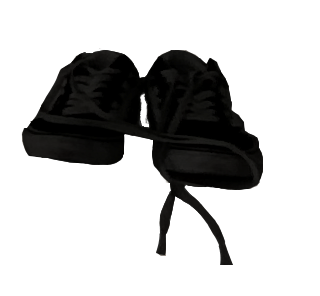
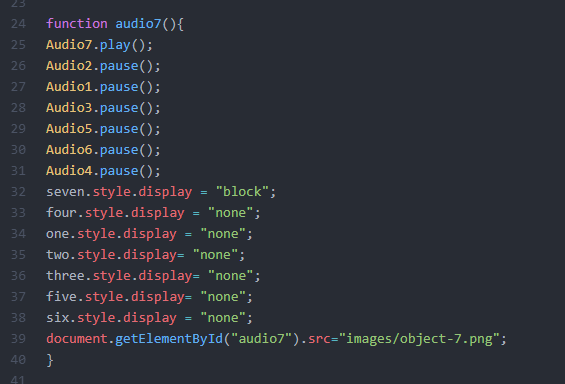
Overall, I am happy with how our project came out and would only make some minor adjustments to perfect it. It was a challenge to make the audio come to life while using minimal visual elements , but I think that Jannie and I succeeded in meeting the expectations that we set for ourselves.
Week 6 – Response to “Serial” – Val Abbene
Episode 1 of Sarah Koenig’s podcast, “Serial,” revisits the murder of Hae Min Lee through a journalistic investigation conducted by Koenig fifteen years after the crime was committed. The podcast is primarily driven by Koenig’s narrative voice as she frames the events of January 13th, 1999 within the anecdotes that she gathered from her interviewees. As for the sound design of the podcast, Koenig’s inclusion of interview excerpts, recovered court audio tapes, and her own narration kept the podcast varied and deepened the story. Since her intention was to retell an event that occurred fifteen years ago to a modern audience, she was challenged to bring the listeners back to that exact moment in vivid detail without using any visual aids. “Serial” relies heavily on the strength of Koenig’s storytelling skills and her ability to captivate the listener and hold onto their attention for the entire hour that the podcast runs. She achieves this by hooking the listener through the gradual reveal of details that leaves them wanting to know more about the case. Even though the podcast ends without Koenig producing any solid evidence that implicated or vindicated Adnan Syed, her experienced storytelling within the true crime genre was enough to maintain the interest and attention of the listener.
I would also like to note that I listened to this podcast while I was taking public transportation, which allowed me to closely focus on the story while I was participating in a mandatory part of my day that normally passes without any entertainment. I found the medium of the podcast interesting because it can be easily integrated into your daily life without demanding a huge time investment. Listening to “Serial” might even motivate me to pick up the habit of following podcasts in my down time to relax while also keeping my mind active.
